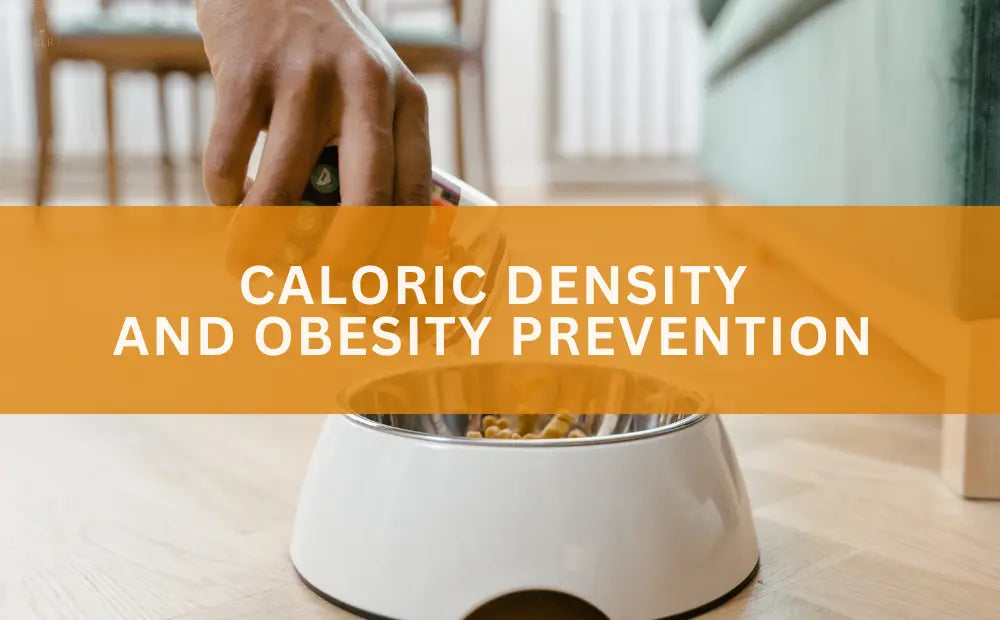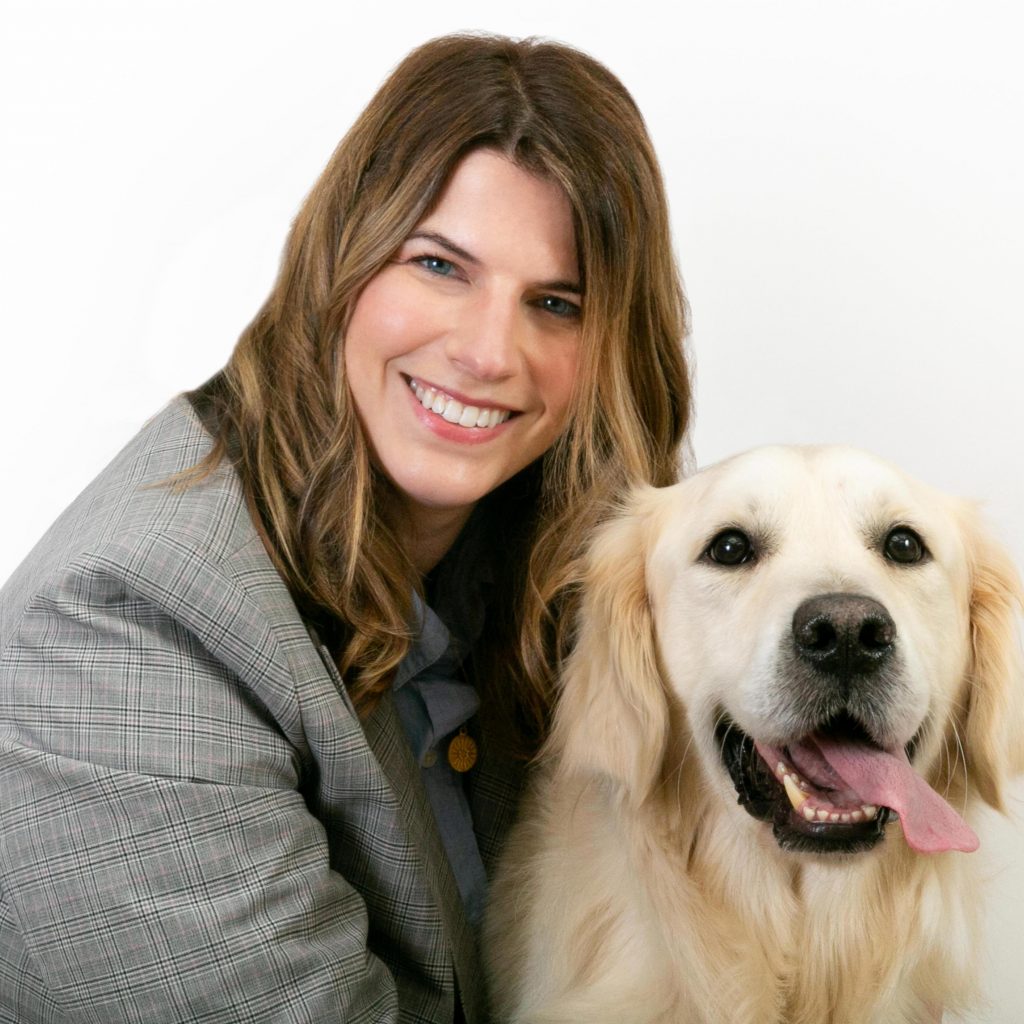
What Pet Food Labels Don’t Tell You About Weight Gain
Over 60% of pets in the U.S. are overweight—but it doesn’t have to be this way. This guide breaks down the overlooked concept of caloric density and how it influences your pet’s health. Learn how to assess your pet’s body condition, avoid sneaky calories, and build simple, daily habits to prevent obesity and extend your pet’s life. Because feeding with care is one of the most powerful things you can do.
By Danielle Conway, DVM, ACVIM-Eligible
Over 60% of dogs and cats in the United States are overweight or obese; a number that continues to climb each year.
Feeding your pet a healthy, balanced diet goes far beyond choosing the right ingredients; it also means understanding how much to feed and why. One of the most overlooked, but critically important, factors in pet nutrition is caloric density. Knowing what it is, how it varies between foods, and how it impacts your pet’s health can help you avoid one of the most preventable and harmful issues in modern pet care: obesity.
What Is Caloric Density?
Caloric density refers to the number of calories in a given weight or volume of food. A food with high caloric density packs a large number of calories into a small portion, while a low-caloric-density food provides fewer calories per bite, often with more fiber, moisture, and volume.
To visualize this: 100 calories of broccoli fills a bowl. The same 100 calories in donut form barely covers a third of your palm. The difference isn’t just in size; it’s in satiety, digestion, and overall impact on health.
In pet food, this concept matters enormously. Some commercial pet foods use high levels of fat to improve taste and energy density. While fat isn’t inherently bad, it is the most calorie-dense macronutrient. At 9 calories per gram, it’s more than double the energy provided by protein or carbohydrates, both of which provide about 4 calories per gram.
Healthy Weight, Healthy Pet
With more than half the dogs and cats in the United States considered overweight or obese, this statistic is not only alarming but reshaping what we think a “healthy” pet looks like. Many pets we see in commercials, on social media, or even walking down the street are actually heavier than is ideal.
Obesity in pets increases the risk of:
-
Diabetes
-
Arthritis and joint damage
-
Heart disease
-
Reduced lifespan
-
Certain cancers
-
Orthopedic injuries like torn cruciate ligaments (especially in dogs)
Unlike in humans, where lifestyle choices can be independent of caregivers, our pets depend entirely on us for food, portion control, and exercise. That gives us both a great responsibility and an opportunity to make a real difference.

Body Condition: How to Know If Your Pet Is Overweight
Veterinarians use a Body Condition Score (BCS) system, which rates pets from 1 to 9 based on visual and tactile signs. A score of 4–5 out of 9 is considered ideal. Scores above 5 indicate an overweight or obese status.
Here’s how to assess at home:
-
Rib Check: Gently press on your pet’s ribcage, behind the front legs. You should feel the ribs easily beneath a thin layer of fat, like pressing on the back of your hand. If you need to push in to feel them, your pet may be overweight.
-
Waistline View: Look down at your pet from above. A healthy pet should have a visible waist - an hourglass shape behind the ribs.
-
Abdominal Tuck: View your pet from the side. There should be a noticeable upward slope from the chest to the hindquarters.
If you're unsure, ask your vet for guidance based on your pet’s breed, age, and activity level.
How to Prevent Weight Gain
Obesity prevention isn’t about calorie-cutting alone; it’s about feeding smarter. Here are science-backed ways to help your pet stay fit:
1. Feed the Right Amount
Use a measuring cup (8 oz) or, even better, a kitchen scale. Weighing food in grams is more precise and reduces error over time. Avoid using mugs, scoops, or “eyeballing” portions, which often leads to unintentional overfeeding.
2. Monitor Treats and Toppers
Treats, chews, and table scraps should make up no more than 10% of your pet’s daily calories. This is especially important if you feed a complete and balanced base food. Adding extras can disrupt that balance, leading to nutritional deficiencies or excesses.
For example: a small dog may only require 400 calories per day. That means just 40 calories from treats. A single bully stick can exceed that by 2–3x.
3. Your Pet Needs Exercise, Too
Much like in humans, physical activity helps regulate metabolism, supports joint health, and maintains muscle mass.
Aim for:
-
Dogs: At least 30–60 minutes of activity daily (walks, fetch, structured play)
-
Cats: 2–3 short play sessions per day using toys that mimic prey (wands, lasers, treat puzzles)
Indoor enrichment like food-dispensing toys or puzzle feeders also encourages movement while feeding the brain.
4. Choose Nutrient-Dense, Moderately Caloric Foods
Many pet foods will have high protein but also sneak in high fat. Look for foods that are
-
Rich in quality protein for satiety and lean muscle
-
Moderately low in fat to support weight maintenance
-
Supplemented with the right balance of vitamins and minerals for complete health
That means your pet can enjoy a satisfying volume of food without excessive calorie intake.
5. Track Progress Monthly
Weigh your pet at home or during regular vet visits. Snap photos from above and the side monthly to monitor changes. A visual record can help you stay ahead of gradual weight gain.
Daily Checklist: Keeping Your Pet on Track
Here’s a simple guide to integrate into your pet’s daily routine check:
✅ Measured food
✅ Appropriate treat count
✅ Play or exercise time
✅ Ribs are easy to feel
✅ Waistline visible from above
✅ Monthly weight/photo logged
This quick mental checklist reinforces healthy habits without extra work.

Be Your Pet’s Biggest Health Advocate
Obesity isn’t just a cosmetic issue. It’s one of the most significant threats to your pet’s long-term health. But the good news? It’s also one of the most preventable.
By learning about caloric density, adjusting food portions thoughtfully, and staying engaged with your pet’s body condition and energy needs, you’re doing more than feeding. You’re caring consciously.
At My Pet Grocer, we’re here to support you with tools, support, and education so you can feed with confidence and keep your companion thriving.
